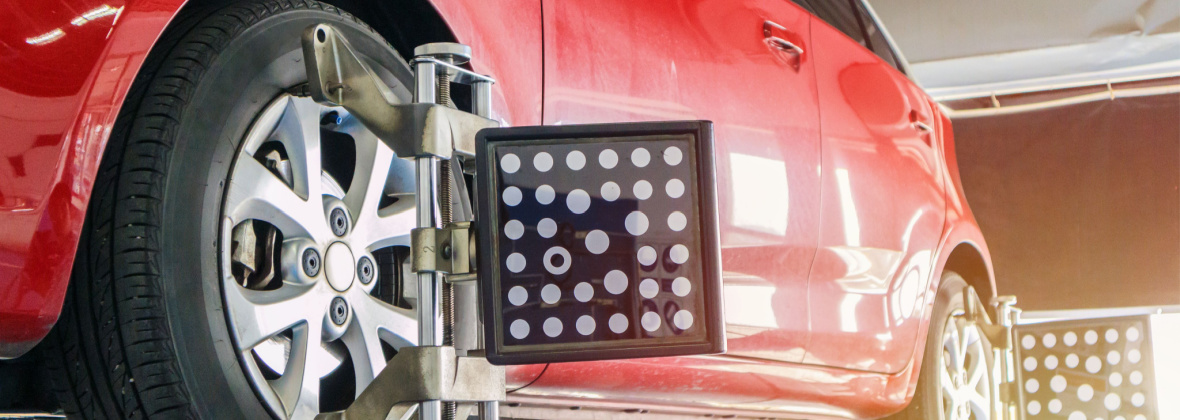Why Tire Alignment/Rotation Is Important
October 19, 2022

If you’re like most people, you probably don’t think much about your car’s tires. But the truth is, tire alignment and rotation are important maintenance tasks that can help extend the life of your tires. Here are three good reasons to keep your tires in tip-top shape:
- Proper alignment and rotation can help improve your gas mileage.
- It can also reduce wear and tear on your tires, making them last longer.
- Keeping your tires properly aligned and rotated can also improve your car’s handling, making it safer to drive.
So next time you’re getting your oil changed or checking your tire pressure, don’t forget to ask about getting your alignment and rotation checked, too. It’s one of the best ways to keep your car running safely and efficiently for years to come.
Introduction
Tire alignment and rotation are both important parts of tire maintenance. Here are 3 reasons why:
1) To prevent premature tire wear – Uneven tire wear can be caused by many things, but most often it’s the result of improper tire alignment or balance. This uneven wear will not only shorten the life of your tires but can also lead to dangerous driving conditions.
2) To improve fuel economy – When your tires are properly aligned and inflated, they will have less rolling resistance. This means your engine won’t have to work as hard to move your vehicle down the road, leading to better fuel economy.
3) To improve handling and stability – If your tires are out of alignment, it can cause your vehicle to pull to one side or the other. This can make it difficult to keep your vehicle going in a straight line, and can also lead to reduced stability at higher speeds. Rotating your tires regularly will help ensure that they wear evenly, which will also improve handling and stability.
What is Tire Alignment?
Tire alignment is the adjustment of a vehicle’s suspension so that all wheels are pointing in the same direction. This helps to ensure that the vehicle travels straight and does not veer to one side or the other. Tire rotation is the process of moving a vehicle’s tires from one position to another on the vehicle.
What are the different types of alignment?
There are generally three different types of tire alignment: front-end, four-wheel, and caster alignment. Front-end alignment means that your technician will only adjust the angles of your front tires. Four-wheel alignment means that your technician will adjust the angles of all four of your tires. Caster alignment is a special adjustment that is only done on front-wheel drive vehicles; it adjusts the angle of the steering axis.
How do I know if my car needs an alignment?
If your car starts to pull to one side of the road or your steering wheel starts to vibrate, it may be time for a tire alignment. You should also get your tires aligned if you notice that they are wearing unevenly.
There are a few things that can cause your car to need an alignment. Hitting a curb or pothole is one common reason. If you’ve recently had work done on your suspension, that can also affect your alignment.
Getting a tire alignment is important for a few reasons. First, it will help you get the most life out of your tires. When your tires are properly aligned, they will wear evenly, which means they’ll last longer.
Second, having properly aligned tires will improve your gas mileage. When your tires are out of alignment, they have to work harder to roll down the road, which means you’ll use more gas.
Finally, having properly aligned tires will improve the handling of your car. If you’ve ever driven on a road with potholes, you know how important it is to have good handling. With properly aligned tires, you’ll be able to avoid potholes and other obstacles in the road more easily.
What is Tire Rotation?
Tire rotation is the practice of moving your tires from one position on your vehicle to another. This helps to prevent uneven wear and can help extend the life of your tires. It’s important to rotate your tires regularly, and there are a few different ways to do it. Let’s talk about the benefits of tire rotation and how to do it.
Why is tire rotation important?
Most car makers recommended tire rotation every 5,000 to 7,500 miles, and more often if you drive mostly in stop-and-go traffic or live in an area with severe weather conditions. You can usually have your tires rotated when you go in for regularly scheduled maintenance, such as an oil change or tire alignment.
Tire rotation is important because it helps ensure that your tires wear evenly and last longer. Uneven tire wear can lead to premature tire failure and decreased fuel efficiency. In some cases, uneven tire wear can also affect the handling and performance of your vehicle.
There are a few different ways to rotate your tires, but the most common method is known as the “forward cross.” This method involves moving the front tires to the rear position and vice versa. The other two methods are the “rearward cross” and the “side-to-side swap.” All three methods are effective at promoting even tire wear.
If you’re not sure how to rotate your tires, consult your car’s owner’s manual or ask a professional technician at a nearby service centre.
How often should I rotate my tires?
Most passenger vehicles can go up to 5,000 miles before needing a tire rotation. However, it’s best to consult your vehicle’s owner’s manual for the manufacturer’s recommendations. Many newer cars have sensors that will notify you when it’s time for tire service, which might include a rotation.
It’s generally recommended that you rotate your tires every other oil change. So if you get your oil changed every 3,000 miles or so, you should rotate your tires at that time as well.
Conclusion
3 Reasons Why Tire Alignment & Rotation Are Important
- To Prolong the Life of Your Tires
- To Improve Your Vehicle’s Handling
- To Save Money on Fuel


